Search engine optimisation (SEO) plays a crucial role for any brand aiming to gain visibility on platforms such as Google. To excel in this marketing strategy, a dedicated investment in SEO is essential. Learn more about the basics from Google’s SEO Starter Guide.
SEO revolves around aligning your website with Google’s AI and algorithms to ensure your site is effectively indexed and achieves high rankings within the search engine results pages (SERPs).
When optimised correctly, these rankings lead to increased website traffic, higher conversion rates, more leads, and an improved return on investment (ROI).
SEO success depends on many factors, but one of the key elements Google’s AI crawlers assess is anchor text — the clickable blue text that links one webpage to another.
For instance, the anchor text in this article links directly to our website. But what exactly is anchor text, and why does it matter so much for SEO? Let’s explore the concept of anchor text, its significance, and best practices for its use.
What is Anchor Text, and Why Does it Matter for SEO?
Anchor text is the visible, clickable text in a hyperlink that directs users to another webpage or resource. It serves as a prompt, encouraging readers to click and explore the linked content.
From an SEO perspective, anchor text provides Google with valuable context by connecting specific keywords with the destination URL. It helps search engines understand the relationship between pages and the relevance of the linked content. For a deep dive into best practices, explore Moz guide to anchor text.
Technically, anchor text is part of the HTML code. Here’s an example of anchor text usage on our website:
<a href=”https://www.digitotal.com.au/”>our website</a>
This snippet shows how anchor text functions to link users while informing search engines about the link’s purpose.
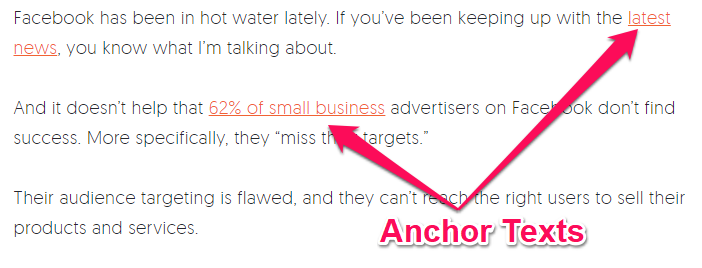
What Are the Different Types of Anchor Text?
There are various types of anchor text that follow best practices worth considering, including:
Exact Match Anchor Texts
This type involves using anchor text that exactly matches the keyword or phrase found in the URL of the linked page, whether it’s on your own site or an external website. For example, if you are linking to a page focused on “anchor text SEO,” the anchor text you use would be precisely “anchor text SEO.”
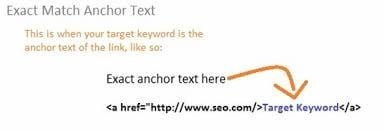
Partial-Match Anchor Texts
This type of anchor text includes a variation of the target keyword rather than an exact match. For instance, you might use the phrase “anchor text example” when linking to a page related to anchor texts. It maintains keyword relevance without repeating the exact term.
Branded Anchor Texts
Branded anchor text uses the name of a company or brand as the hyperlink. For example, we might use our brand name DigiTotal to link directly to our website. This is a common and trusted form of linking.
Naked Link Anchor Texts
A naked link displays the full URL within the content, without any custom text. An example would be: www.digitotal.com.au. While not as visually clean, it still serves a clear SEO purpose.
Generic Anchor Texts
Generic anchor text typically consists of non-descriptive, action-oriented phrases such as “click here,” “read more,” or “learn more.” These are often used for usability, but offer limited SEO value unless paired with strong contextual relevance.
Image Anchor Texts
When an image is used as a hyperlink, Google treats the alt attribute of that image as the anchor text. Therefore, it’s essential to write descriptive, keyword-relevant alt text to support both accessibility and SEO performance.
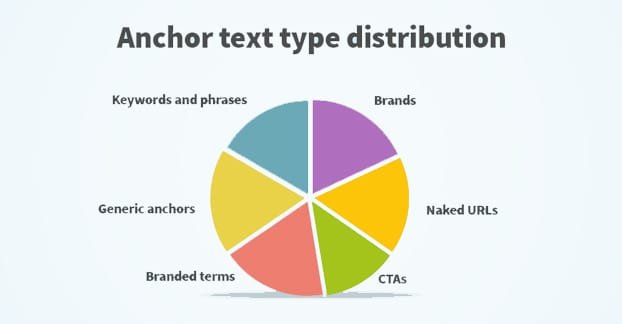
Anchor Text Is Great for User Experience — But Is It Good for SEO?
Anchor text is highly beneficial for SEO — but only when used correctly and in line with white hat SEO best practices. When properly implemented, it helps Google accurately interpret and rank your content within search results.
To achieve this, anchor texts should be clear, concise, and directly relevant to the destination page. They should avoid excessive keyword usage — in this case, less is definitely more. While generic terms can be used, they should serve a specific purpose rather than being filler.
In the early days of the internet, it wasn’t uncommon to see pages overloaded with exact match anchor text, stuffed with keywords. This tactic often led to sites ranking at the top of Google for queries that weren’t even closely related to their actual content.
However, this strategy is now outdated and potentially damaging. Google addressed this issue with significant algorithm updates — most notably, the Penguin update — which targeted manipulative link practices and poor-quality SEO.
Since then, using anchor text effectively requires a more strategic and thoughtful approach. When done right, it enhances both SEO performance and user experience. For more insights into how SEO and user experience intersect, check out Backlinko’s Guide.
That’s not to say anchor text isn’t valuable — in fact, it’s extremely beneficial. It helps Google gain a clear understanding of what each linked page is about, making it easier to match that content to the most relevant search queries and the right target audience.

Breathing New Life into Old Content
Here’s a simple yet effective tip when you’re asking, “What is anchor text?”
Anchor text can be used strategically to revitalise older content. If you’ve recently published a new piece that relates to earlier articles, go back and update those older posts by linking them to the new content using relevant anchor text.
Google values fresh, regularly updated content. By linking old pages to newer, relevant ones, you’re signaling to search engines that your content remains current and interconnected—helping boost rankings in search results.
This also improves user experience. Readers can easily navigate to additional, related information, staying longer on your website and increasing the chances they’ll take meaningful action—either immediately or in the future.
Internal and External Linking with Anchor Text
Anchor text can be used in two primary ways:
- Internal linking – directing users to other pages on your own website (or to different sections on the same page).
- External linking – connecting to third-party websites that offer additional value, such as citations, resources, or further reading.
While we’ve already touched on exact match anchor text, it’s important to note: using exact match anchor text for internal links should be approached with caution. Overusing it can lead to content duplication, which can negatively affect SEO and potentially trigger penalties from Google.
Use anchor text naturally and sparingly. Avoid redirecting from large blocks of text—highlighting entire paragraphs is not only poor user experience, but also bad practice for SEO.
When linking externally, anchor text helps Google confirm the topic of your page. For example, if you sell plumbing supplies and include links to reputable plumbing-related articles, this reinforces to Google that your content is genuinely about plumbing.
Additionally, external links to valuable sources enhance the credibility of your website, building trust with both users and search engines.
How Do I Create Anchor Text?
Creating anchor text is simple:
- Highlight the text you want to turn into a link.
- Copy the target URL (the page you want the link to point to).
- Use your editor’s toolbar or right-click menu to insert the link.
- Paste the URL and hit enter. Your anchor text should now appear underlined and in blue (or styled accordingly on your site).
This process is commonly used for creating hyperlinks—and in fact, the two are closely related. The main difference is that hyperlinks typically link to another webpage or site, while anchor text can also be used to link to specific sections within the same page or domain (also known as anchor links).
Using HTML, you can direct users to exact page elements, such as a contact form or a call-to-action section. This is highly effective for keeping users engaged and guiding them to take the next step.
Use Keywords You Want to Rank For in Anchor Text
This ties back to best practices: avoid stuffing anchor text with excessive keywords. Instead, be selective. Use keywords that you actually want to rank for—and make sure they match the content of the page you’re linking to.
For example, at DigiTotal, we aim to rank for the term SEO Gold Coast. So, we use that specific phrase in our anchor text when linking to this page:
This benefits SEO in two main ways:
- Google recognises the relevance between the anchor text and the linked page, strengthening that page’s authority for the target keyword.
- Reputation builds with backlinks – when multiple external websites link to your page using the same keyword-rich anchor text, Google sees that as a sign of credibility and subject relevance.
For instance, if you are a Broadbeach Plumber and several other websites link to your site using the anchor text Broadbeach Plumber, Google will interpret your page as a trusted authority in that field. This significantly boosts your chances of ranking at the top of search results for that term.
More Tips on Improving Your Anchor Text Strategies

While the basics of anchor text are essential, there’s a lot more to mastering it. Below is our checklist of dos and don’ts to help you develop the most effective strategy to optimise your pages for SEO:
Ensure the Anchor Text is Relevant to the Link
If you use the phrase premium cat food but link to a page unrelated to that topic, you risk confusing and alienating your audience. Even worse, Google’s AI will struggle to understand the connection, and without relevance, you won’t gain any SEO advantage.
Vary the Keywords You Use for Anchor Text
Many assume that repeatedly using the exact keyword they want to rank for will guarantee SEO success. However, Google is well aware of this tactic. Overloading your content with identical anchor text can lead to penalties rather than rewards.
Instead, diversify your keyword choices. Use a range of relevant terms that relate to the page you’re linking to, ensuring natural, varied anchor text that signals relevance without over-optimisation.
Write Descriptive Anchor Text
Sometimes, short and generic anchor text like “click here” or “act now” serves a clear call-to-action purpose. However, remember these links aren’t just for search engines—they’re for your readers.
Providing descriptive, meaningful anchor text encourages users to click through, engage more deeply with your content, and potentially take action, such as making a purchase or completing a contact form.
Use Google Analytics for Tracking
When you set anchor links pointing to pages on your site, you can track visitor behaviour via Google Analytics. Navigate to Behaviour > Site Content > All Pages to view traffic data and interactions.
This insight helps you understand how users navigate your site, identify which content performs well, and spot areas needing improvement—ultimately enabling you to optimise for more conversions and sales.
Space Them Out
Avoid stuffing all your anchor text links at the bottom of an article—that’s ineffective and lazy. Instead, place anchor links naturally throughout your content wherever there’s a logical connection between pages.
Your primary goal should be to deliver genuine value to readers, with SEO benefits following naturally from these thoughtful connections.
Use Follow Links
Follow links pass SEO value and help improve your rankings, while no-follow links generally do not. Use no-follow links sparingly, typically only when you’ve purchased a link or are concerned about potential penalties.
A better approach is to avoid risky links altogether and seek reputable sites that will link to you using follow links, ensuring your SEO strategy remains strong and penalty-free.
What to Avoid with Anchor Text?
There are several common pitfalls to watch out for when using anchor text on your website. Here are some key things to avoid to ensure your anchor text strategy is effective and SEO-friendly:
Avoid Using Generic Anchor Text
Unless the anchor text is intended as a clear call to action, you should aim for something more engaging and compelling. Simply using phrases like “find out more” won’t motivate users to click. Instead, make sure your highlighted text includes relevant keywords and clearly relates to the destination page. Be creative and enticing—give your audience a genuine reason to click through.
Don’t Link All Your Anchor Text to Your Homepage
The purpose of anchor text links is to help Google rank as many pages on your website as possible while guiding your audience deeper into your content. Directing all links back to your homepage limits this opportunity and can frustrate users, causing them to leave your site and explore competitors instead. Relying solely on your homepage for internal linking is also risky for SEO, as it concentrates all authority in one place rather than distributing it across valuable pages.
Stay Away from Spammy or Low-Quality Sites
Avoid linking to sites that may be unreliable or spammy. It’s important not to mislead your visitors by directing them to pages that don’t deliver on promises or appear suspicious. Google penalises such practices, and your audience will quickly lose trust in your brand. Always research and verify the credibility of any external sites before linking to them through your anchor text. Low-quality backlinks harm your SEO and provide little value to your visitors.
Don’t Over-Optimise Your Anchor Text
SEO is like a fine wine—you don’t want to overdo it. Flooding your pages with excessive anchor text or keyword-rich links raises red flags with Google and may lead to penalties rather than ranking boosts. From a user perspective, a page crowded with blue underlined links is distracting and off-putting. Use anchor text thoughtfully and sparingly to maintain a natural, user-friendly flow. Google provides detailed webmaster guidelines on link best practices to avoid over-optimization.
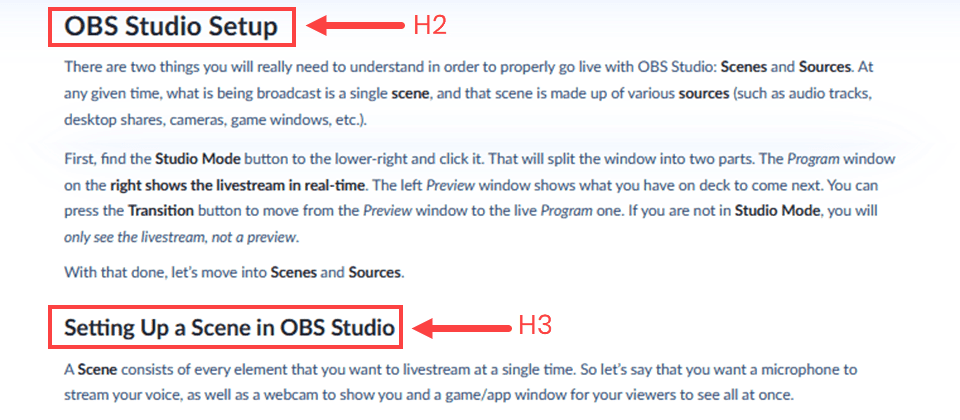
Overusing anchor text is known as over-optimisation, which also applies to keyword usage. Conduct a thorough audit of your site to check how frequently your keywords appear in anchor text. As a best practice, avoid having the exact same keyword in more than 10% of your total anchor text.
If you’re unsure about the best practices for anchor text or want expert guidance, we recommend reaching out to our SEO team for professional advice and support.


